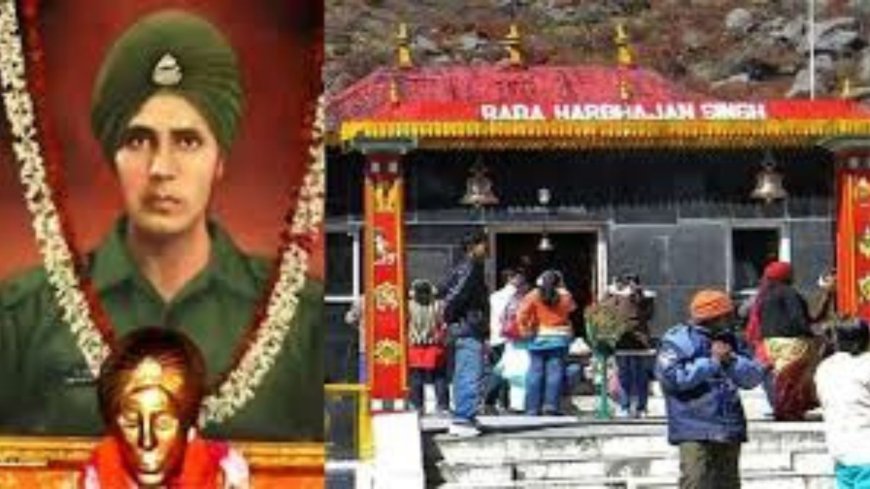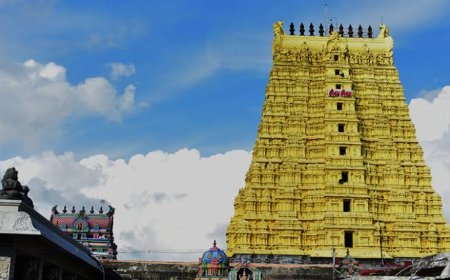Unveiling Baba Harbhajan Singh History & His Untold Legacy
High in the Eastern Himalayas, near the India-China border in Sikkim, lies a shrine that has become a place of deep devotion, not just for soldiers, but for thousands of tourists every year.

High in the Eastern Himalayas, near the India-China border in Sikkim, lies a shrine that has become a place of deep devotion, not just for soldiers, but for thousands of tourists every year. This sacred spot honors Baba Harbhajan Singh, a name that echoes with respect, faith, and mystery. The story behind this soldier-turned-legend is not only inspiringits almost surreal. Understanding the Baba Harbhajan Singh history means diving into a tale where bravery, loyalty, and spirituality blend into something unforgettable.
Baba Harbhajan Singh was a soldier in the Indian Army, serving with the 23rd Punjab Regiment. He joined the force in 1966 and was posted near Nathula Pass in Sikkim, an area known for its challenging weather and tense border conditions. In 1968, while on duty, he tragically lost his life by drowning in a glacier stream during a patrol. What happened after his death, however, is what made his story immortal.
A Soldier Who Refused to Leave His Post
According to local folklore and accounts from fellow soldiers, Baba Harbhajan Singh appeared in dreams of his colleagues after his death. In these dreams, he asked for a shrine to be built in his memory and promised to protect the soldiers of the Indian Army even after death. Many believe he continues to patrol the border, warning the army of possible threats and dangers. These stories are not just passed downthey are taken seriously. So seriously, in fact, that for many years, the Indian Army kept a bunk ready for him during official movements and even reserved a seat for him on transport convoys when he returned home on annual leave.
The belief is so strong that Chinese soldiers on the other side of the border reportedly acknowledge his presence and are aware of the reverence he receives. The Baba Harbhajan Singh history has transformed from a personal tale of sacrifice to a legend of national pride and spiritual faith. His spirit is considered a guardian of the soldiers in the region, and the temple dedicated to him is visited regularly by both military personnel and civilians.
The Shrine That Keeps His Memory Alive
The Baba Harbhajan Singh Temple is located at an altitude of around 13,000 feet, on the way from Gangtok to Nathula Pass. The shrine includes a room that displays his uniform, neatly pressed and ready, along with boots that are polished daily. Soldiers claim that the bed sheets are mysteriously crumpled in the morning, and water bottles are found emptysigns believed to indicate Babas unseen presence during the night.
Tourists visiting the shrine feel a sense of calm and respect, even if they arent fully aware of the Baba Harbhajan Singh history. Its not just a place of worshipits a living tribute to the loyalty of a soldier who is believed to have transcended death. Many visitors leave offerings, pray for safe travels, and write messages to Baba, asking for his blessings.
This spiritual connection between a soldier and his duty has made Baba Harbhajan Singh a symbol of how deeply Indian culture values sacrifice and honor. His legend has inspired books, documentaries, and countless stories told by locals and soldiers alike. It's not uncommon for army personnel posted in Sikkim to speak of him with the same respect they would give to a commanding officer.
A Legacy That Continues to Inspire
Even decades after his passing, Baba Harbhajan Singh continues to influence lives. His story is included in school textbooks, travel guides, and army folklore. Visitors from across the country come to learn about him, many leaving with a renewed sense of respect for Indias armed forces. The shrine stands not only as a symbol of faith but also as a reminder of the courage and dedication shown by soldiers in extreme conditions.
The Baba Harbhajan Singh history is also unique in that it brings together spirituality and patriotism. It shows how a soldier, through his actions and believed presence, continues to unite people, inspire belief, and instill a deep sense of duty. His temple is a peaceful place surrounded by snow-covered peaks, fluttering prayer flags, and the unshakable silence of the mountainsall of which add to the mystic power that seems to radiate from the site.
Every year, a special ritual is performed on his death anniversary, where army officials and locals gather to honor his memory. Its a rare example of a soldier being worshipped like a saint, not because of mythical powers, but because of the strong belief in his undying sense of responsibility. This legacy strengthens the bond between the local people and the Indian Army and adds emotional depth to the already spiritual experience of visiting Sikkim.
Conclusion: Babas Watch Over the Mountains
In a world where stories fade with time, the Baba Harbhajan Singh history stands tall like the mountains he once guarded. His story isnt just about a soldier who died in the line of dutyits about a spirit that lives on to protect, guide, and inspire. Whether you believe in miracles or not, the tale of Baba Harbhajan Singh touches everyone who hears it.
As you travel through the beautiful landscapes of Sikkim, especially near Nathula Pass, take a moment to stop at his shrine. Feel the quiet, breathe in the mountain air, and reflect on the bravery of a man whose duty never ended. His is not just a name carved in stoneits a presence felt in every snowflake, prayer flag, and salute offered in his memory.
The Baba Harbhajan Singh history is more than just a tale; it's a living legenda reminder that true dedication knows no boundaries, not even death.



































